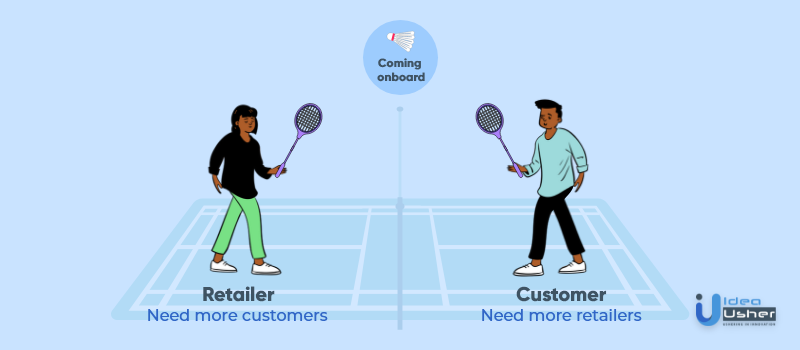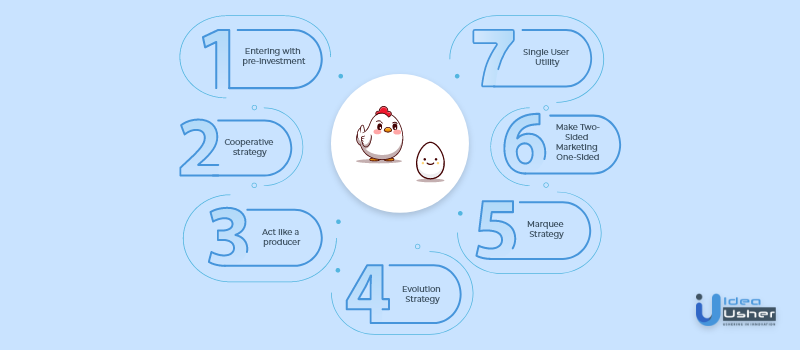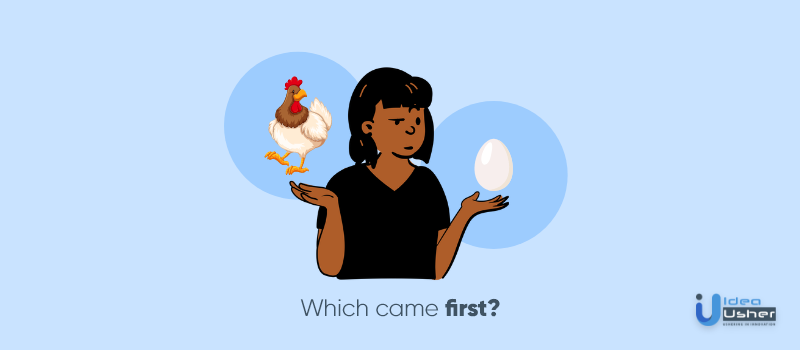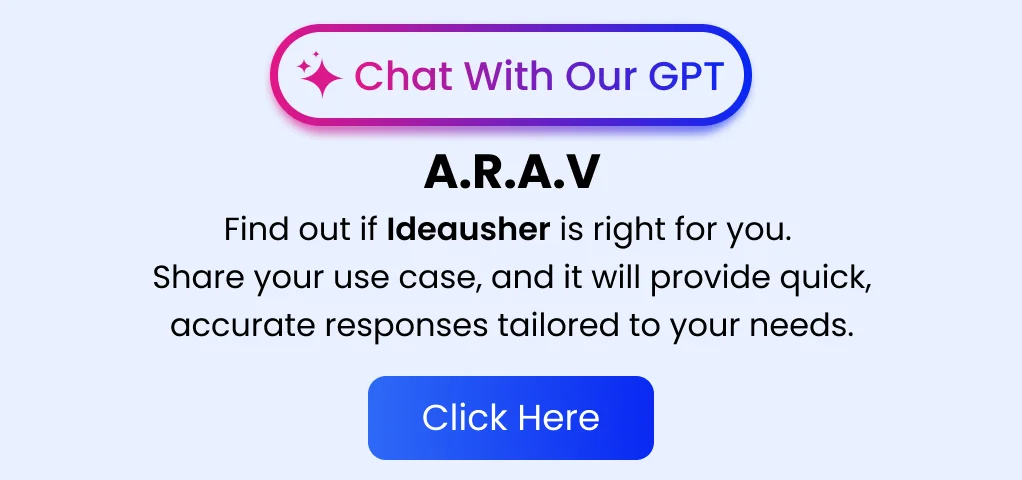No…this has nothing to do with actual chicken and eggs.
But if not that, then what exactly is the chicken and egg problem??
As a kid, there must have been many instances where the age-old question ‘which one came first? Chicken or egg??’ must have troubled you.
Well, we have some sad news. The tragedy did not end there.
As an adult on the business front, a much higher level of this riddle might trouble you, called the chicken and the egg problem.
Luckily, we have come to a solution. Keep reading!
What exactly is the Chicken and egg problem?
When starting a new business venture, there are many things to look after, especially if it is a platform or an aggregator that brings customers and buyers together.
Unlike linear startups (sole trading & ownership norms), these platforms entertain two parties – customer and retailer. This is where the chicken and egg problem kicks in.
The chicken and egg problem is basically when the value proposition of two different parties is dependent on each other.
For instance, you have started a food delivery business. Now, to attract customers, you need to have plenty of restaurants onboard. But, at the same time, to have those restaurants onboard, you need to attract them with the idea of having hundreds of customers onboard.

When else does this problem arise?
Well, there are three most common situations where one may spot the chicken and egg problem:
- Market entry
- Startup business
- Creation of a ‘platform.’
How can a platform or a business overcome this vicious circle?
Almost all platforms face the chicken and egg situation. How to overcome it? Subsidize value to the early users. In translation, you will have to lure the prospect without it looking like bait with empty promises.
There are three ways to do so:
- Monetary subsidies: Pricing decisions, loyalty programs, referrals, etc.
- Product features: Introduction of unique features to induce loyalty among users.
- User sequence: Prioritizing a specific user group that may influence and attracts other user groups.
By combining the forces of these three subsidies, a platform can offer enough value to its users to attract them. This not only eradicates the chicken and egg problem but also drives the future growth of the forum.
But how to get these three subsidies in action?
In our years of experience, we have worked with many platforms. After extensive research, we have uncovered seven ways of subsidizing value that can help you overcome the chicken and egg problem.
The best part is that these strategies are not mutually exclusive. So, as per your platform, you can simply select the ones you find the most appropriate.

Monetary Subsidies
1) Entering with pre-investment
One can spot this strategy used commonly in development platforms. Such platforms incur high up-front investment costs, assuring the producers that it is safe to join them.
When your producers notice that you have made some significant investment in your platform, they will find it safer to join hands with you.
One great example can be Microsoft Xbox. During its pre-launch, the company announced that it would spend around $500M on its promotion. The implication? That they are in it for the long haul. They ended up attracting many third-party developers by subtly assuring them that this project is not going anywhere.
2) Cooperative strategy
When you notice things going south, rather than starting your network, tap into an existing channel(s) and make it yours.
Google did that a few years ago.
Google always had desktop search in its bag. But what about the mobile market? iPhone was in it to win. Google had to up its game. That’s when they realized that they are not the only ones who worry about this. Google then formed the Open Handset Alliance (OHA) and joined hands with many others like them.
By using this cooperative strategy, Google tapped into the existing sales of the OHA members.
MS-DOS did something similar as well. MS-DOS had a significant plus point in its hands – It was the only OS designed specifically for running WordStar. By taking advantage of a market that already existed, MS-DOS is also a brilliant example of cooperative strategy.
Another instance that rings a bell is Threadless. It is a platform where people design t-shirts, vote for their favorite, choose a winner and buy them.
Now the chicken and egg question arises – how did they get people to upload designs without having voters decide?
The catch is, Threadless originated from an already existing designers forum. Hence, they already had many designers onboard – even when their final products were not finished and produced.
.Product features
3) Act like a producer
The phrase ‘fake it till you make it’ rings a bell?
That is exactly what this strategy is all about. Instead of fishing for both parties (consumer and producer), focus on one by acting like the other.
This means let your platform act as the producer until you acquire the required customer base you need to start attracting producers.
In one line – start as a linear business.
Let us understand with examples.
iPhone: In the early times after its launch, iPhone did not allow third-party apps to enter its ecosystem. It was only after they acquired a solid customer base that they let other apps. The rest is history…
Amazon: We are all aware of Amazon’s extensive delivery system. But the fact is that this is not how they started. In the beginning, Amazon fulfilled all customer orders on its own.
4) Evolution Strategy
Theoretically, evolution strategy is a bit similar to cooperative strategy.
This strategy revolves around tapping into and acquiring a monopoly over a sub-section of a network rather than creating one from scratch.
Now, it is evident that if you want to woo away a section that is already comfortable in an existing network, you need to up your game.
How to do that? Run a thorough market analysis and target the pain points that your competitors are not currently offering.
For instance, Airbnb grew its ecosystem by tapping into the one Craigslist had created. They focused on the features they thought the market is currently lacking and developed their platform with IT modernization strategy.
Although, this trick is not something you can play fast and loose with. You need to be 100% sure about your analysis and should be able to take out Plan B (or even C) if needed.
5) Marquee Strategy
Aim for high-value customers/ high ticket sales. (Say, customers from an affluent lifestyle- who can afford to spend/invest in your venture). Once you get a solid backup of these, attracting new customers will not be much trouble.
This tactic was followed by Uber when they first launched. They paid the town car partners full-time (even when they were not transporting customers). What did this do? They ended up building a solid producer ecosystem that landed them plenty of well-paying customers.
Many dating apps follow in the same footsteps. By analyzing that the ratio of men is more significant than women, they often offer women free membership.
More women sign-ups = more men sign-ups.
Some apps such as Bumble even curate the entire user experience based on women.
6) Make Two-Sided Marketing One-Sided
How? This resembles what we learned in #3 (remember product features strategy to build loyalty).
Find a user group that can act as both customer and producer. Benefit? You don’t have to worry about the balance between the two parties.
For instance, look at Etsy. They very soon figured out that the people looking to buy handmade goods are also the ones who are selling them. So they focused on just one user group and expanded its reach.
7) Single User Utility
In this strategy, you come up with a proposition good enough to attract one party in such a way that if the other party never shows up, it will do no harm.
Have you ever heard of Instagram? Yes, the social media tycoon. This is how they started. When it was first launched, Instagram only offered the feature of posting pictures. But it was provided in a way that was attractive enough to get the users on board.
To wrap up: A quick summary
These were the seven key strategies that can help you tackle the chicken and egg problem. For some, only one of these might be valid, while others may find all of them suitable. The point is, you can get creative here.
These strategies are the base. Using current market knowledge and analysis, you can very well put a twist on these. Anything that works for your venture.
Contact Idea Usher (we know which one came first – chicken or egg!)
The even easier solution? Leave it on us!
As we have mentioned above, we have catered to many clients. In all that experience, our experts know just how to solve the chicken and egg challenge based on different situations.
If you want to know more about our techniques, schedule a free consultation call with us!
Work with Ex-MAANG developers to build next-gen apps schedule your consultation now
FAQs
Q1) Do all new ventures necessarily face the chicken and egg challenge?
A1) Not necessarily. Exceptions are always there! But yes, almost every new venture is likely to face it, although the intensity might vary.
Q2) How can I ensure that the strategy that I have chosen will work for my venture?
A2) Unfortunately, there is no shortcut to this. You will have to do significant research, case studies, and market analysis to see that the strategy you have chosen will work or not. A good hack will always be to see how your competitors dealt with similar challenges. A more straightforward & more manageable hack will be hiring us!





















